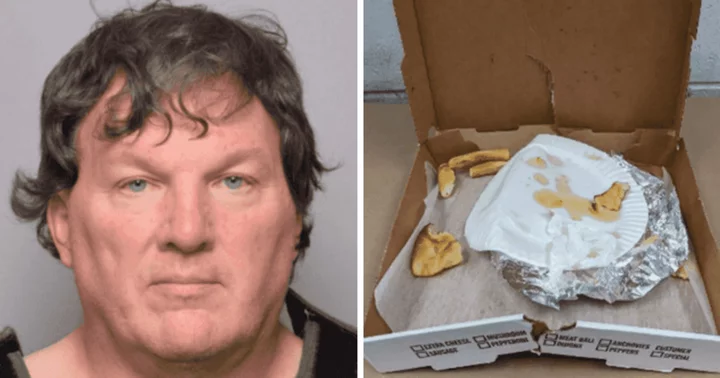SUFFOLK COUNTY, NEW YORK: Gilgo Beach murders suspect Rex Heuermann's DNA, which was obtained by officials from "an abandoned pizza crust," has been considered as the key piece of evidence that led to his arrest on Thursday, July 13, nearly a decade after the murders of four women, known as "The Gilgo Four." As per sources, the New York Police Department will possibly use the suspected serial killer's DNA to analyze if he is also connected to the deaths of several other additional victims who were found dead around the same Long Island location.
"His DNA was never in the system until they arrested him. Now we can compare it to other crimes," a source told the New York Post. So far, Heuermann has been charged with three counts of first-degree murder and three counts of second-degree murder for the deaths of Melissa Barthelemy, Megan Waterman and Amber Costello, three of the first four victims. He has also been considered the "prime suspect" in the death of the fourth victim, Maureen Brainard-Barnes.
Where was Rex Heuermann's pizza box found?
On January 26, investigators saw Heuermann throwing a pizza into a garbage outside his office in Fifth Avenue, Manhattan, New York. Officials then got hold of the pizza box in the trash and obtained the architect's DNA "from the pizza crust abandoned" by him. The DNA was then matched with a strand of male hair found in the burlap that was used to cover Waterman’s body.
Reports suggest that the male hair found in the burlap sack containing Waterman’s remains showed a "99.96%" mitochondrial match to Heuermann’s hair. "On or about January 26, 2023, a surveillance team observed and recovered a pizza box thrown by Defendant Rex A. Heuermann into a garbage can located in front of 385 5th Avenue in Manhattan," the 32-page document submitted by prosecutors detailing the evidences that led to Heuermann's mentioned.
"This pizza box was sent to the Suffolk County Crime Laboratory for analysis, where a swab was taken from the leftover pizza crust. On or about March 23, 2023, the Suffolk County Crime Laboratory sent the swab from the pizza crust abandoned by Defendant Heuermann to Forensic Laboratory #2. On or about April 28, 2023, a detective hand-delivered from Forensic Laboratory #1 a portion of male hair on Waterman to Forensic Laboratory #2 for testing," it added.
"On or about June 12, 2023, Forensic Laboratory #2 was able to determine as to the male hair on Waterman and the swab from the pizza crust, that the “mitochondrial DNA profile(s) are the same,” specifically at a rate that would, as per the EMPOP database, exclude 99.96% of the North American population from the male hair on Waterman," the document continued.
"Based on the foregoing, while 99.96% of the North American population can be excluded from the male hair on 31 Waterman, it is significant that Defendant Heuermann cannot be excluded from the male hair recovered near the “bottom of the burlap” utilized to restrain and transport Megan Waterman’s naked and deceased body," it further stated.
'If we have four, he probably did 10'
Speaking about Heuermann's alleged possible connection to other victims or cold cases, former NYPD cold case detective Wendell Stradford said, "If we have four, he probably did 10. As he got more comfortable with it, he probably figured out how to get rid of them." However, he also explained the process to determine the alleged possible link by using Heuermann's DNA would not be easy, as per the New York Post.
Stradford explained that investigators will reportedly have to identify similar cases and make sure to add the victims’ DNA profiles to the FBI’s CODIS (Combined DNA Index System) database to establish the possibility of any connection to the alleged suspect. "People are under the impression that we submit everything to CODIS. We do not because it’s very expensive, and you have to have a very good reason for doing it because the city is paying for it," he mentioned.
"The biggest thing in sex assaults are fingernail scrapings," Stradford explained. "They’re like, 'Do you have a suspect?' If not... 'We’ll keep them on file in the event that you get a suspect and then we’ll test,'" he added.









